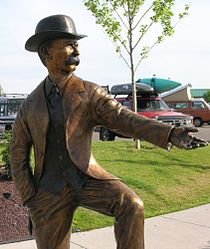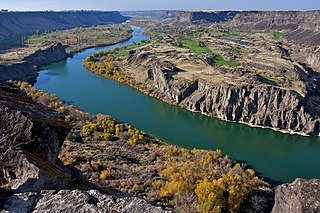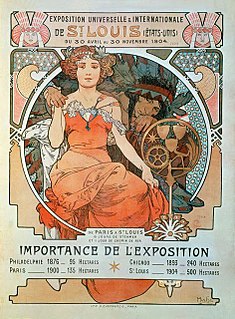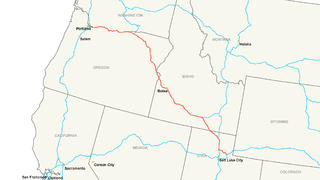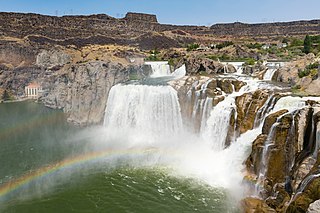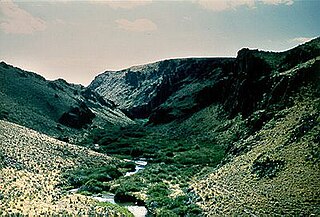| I. B. Perrine | |
|---|---|
Statue of Perrine in Twin Falls, Idaho | |
| Born | May 7, 1861 Delaware, Indiana |
| Died | October 2, 1943 (aged 82) Twin Falls, Idaho |
| Resting place | Jerome, Idaho |
| Residence | Jerome, Idaho |
| Nationality | American |
| Occupation | Farmer, rancher, businessman |
| Known for | Credited as the founder of Twin Falls and other cities in the Magic Valley region of Idaho |
| Spouse(s) | Hortense McKay Perrine (1873–1947) |
| Children | 1 daughter, 2 sons |
| Parent(s) | George W. Perrine Sarah A. (Burton) Perrine |
Ira Burton Perrine (May 7, 1861 - October 2, 1943) was an Idaho farmer, rancher and businessman. Perrine is generally credited as the founder of Twin Falls and other towns in the Magic Valley region.

Idaho is a state in the northwestern region of the United States. It borders the state of Montana to the east and northeast, Wyoming to the east, Nevada and Utah to the south, and Washington and Oregon to the west. To the north, it shares a small portion of the Canadian border with the province of British Columbia. With a population of approximately 1.7 million and an area of 83,569 square miles (216,440 km2), Idaho is the 14th largest, the 12th least populous and the 7th least densely populated of the 50 U.S. states. The state's capital and largest city is Boise.

Twin Falls is the county seat and largest city of Twin Falls County, Idaho, United States. The city had a population of 44,125 as of the 2010 census.
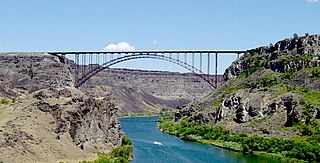
The Magic Valley is a region in south-central Idaho constituting Blaine, Camas, Cassia, Gooding, Jerome, Lincoln, Minidoka, and Twin Falls counties. It is particularly associated with the agricultural region in the Snake River Plain located in the area. The northern Magic Valley region — particularly Blaine and Camas Counties — is also known as the Wood River Valley after the Big Wood River.
Contents
Born in Delaware, Indiana, Perrine's parents were George and Sarah Burton Perrine, and he was a descendant of Daniel Perrin, "The Huguenot."[ citation needed ]

Delaware is an unincorporated community in Delaware Township, Ripley County, in the U.S. state of Indiana.
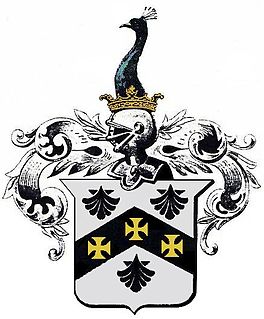
Daniel Perrin (1642–1719) was one of the first permanent European inhabitants of Staten Island, New York. Known as "The Huguenot", he arrived in New York Harbor from the Isle of Jersey on July 29, 1665 aboard the ship Philip, under the command of Philip Carteret. He lived in Elizabethtown, part of the Elizabethtown Tract, for a while before moving across the Arthur Kill and settling on Staten Island. In 1692 he was granted 80 acres (320,000 m2) of land by Governor Benjamin Fletcher in an area along the south shore of Staten Island then known as Smoking Point. During the American Revolutionary War this area was known as Blazing Star, and is now known as Rossville.
